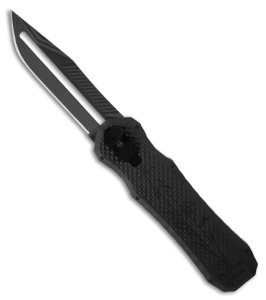(Piranha Excalibur pictured above—just in at Blade HQ.)
While there are many similarities with OTFs and other knives in terms of care and maintenance, there are a few differences, too. Here’s a brief overview of how to properly care for and maintain your OTF.
Lubricate your Blade
For OTFs, it is especially important that the blade is well lubricated at all times. If it’s not sufficiently lubricated, the blade is more likely to slip off its track. Some people here at Blade HQ use a dry lubricant because it’s very lightweight; a thicker lube could gum up when the knife is in use, making the blade deployment slower. Tuf-Glide and Rem Oil are great choices for a thinner lube.
Tuf-Glide and Rem Oil can also be used to clean the blade. The blade should be cleaned approximately once a month. In reality though, it could probably go several months without being cleaned.
Sharpening & Use
Unlike most other knives, OTFs really don’t need to be sharpened. They usually come out of the box pretty sharp, and OTFs that are made by big manufacturers are typically made with good steels and shouldn’t need any sharpening.
OTFs also aren’t intended for heavy duty tasks, so the blade isn’t going to be worn down as much as it would be on a heavy-use knife. Instead, use your OTF for light tasks. If you use it for heavy tasks, the knife will fall off track, or the locking mechanism will fail.
If the Blade Slips off the Track
If your blade—for some reason or another—slips off the track, you can easily fix it yourself. Hold the knife upside down until the blade slides out of the handle. Then, carefully pull the blade out by the flat side (not by the sharp edges) until you hear a click. Lubricate the blade, and you’re done. Pretty easy, right?
By properly caring for your OTF, you can help your knife to stay in its original, smooth-opening condition for longer, which will make your life a lot easier. Check out the variety of OTFs and other knife accessories available at Blade HQ.

